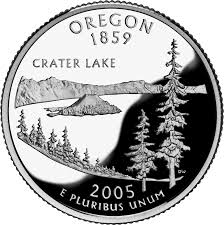 Collecting United States quarters is a great hobby to pursue because they are so easy to come by since they are often part of the change we receive from merchandise purchases; however, there are things to bear in mind when starting and developing a collection.
Collecting United States quarters is a great hobby to pursue because they are so easy to come by since they are often part of the change we receive from merchandise purchases; however, there are things to bear in mind when starting and developing a collection.
The 50 state quarter program came into existence in 1999 as one for each US state was minted beginning with Delaware, the first officially-recognized state, and continuing in the order of statehood entry. This process was completed in 2008.
Considered to be an ideal hobby for children, two options for keeping and organizing coins already collected were a US state quarter boards and state quarter booklets, since in each case a pocket for placement and safe keeping was provided.
Date Set Collecting vs. Both Philadelphia and Denver Mint Collecting
Since quarters for each state were minted in Philadelphia and Denver, many adults (particularly those who are seasoned collectors) have pondered whether to assemble a “date set” of 50 quarters regardless of mint origin or to attempt to collect 50 Philadelphia minted quarters and 50 quarters minted in Denver.
According to “The Fun Times Guide”, for unexplained reasons the same number of quarters were not minted for each state by either minting entity. It is estimated that 943,000 Virginia quarters were issued by the Philadelphia Mint while only 213,000 were created by the same mint for Iowa.
The cost involved in “date set” collecting is $12.50 as opposed to $25 for a Philadelphia/Denver collection. Those who decide to take the easy route by acquiring already completed sets from a coin dealer can expect to pay $30 to $35 for a “date set” or $60 for a Philadelphia/Denver collection.
Why Some Quarters Are More Valuable Than Others
Serious quarter collectors and coin dealers examine them and determine their value by the base metal used, and rarity. Quarters that are subject to high demand, but short supply share the rarity umbrella with those deemed to be truly rare because they bear a minting error.
In the realm of high demand but short supply, over 520 million California coins were minted. It was surmised that 36,000,000 California residents along with collectors from the other 49 states could possibly be watching for their state quarter. By contrast, New Hampshire’s quarter was minted in 2000 coinciding with the dot.com bubble demise and US entrance into recession. To stem this tide, the U.S. Treasury currency issue included 1.2 billion quarters. While not all quarters were New Hampshire state quarters, statistics reveal that in 2005 there were 892 quarters available for every New Hampshire resident.
Quarters Known To Bear Minting Errors
While not every quarter issued for each state bears a minting error, those ranked in order of value created by this flaw are: Both Wisconsin quarters, Nebraska, Kansas, Oregon, South Carolina, Wyoming, Arizona, Connecticut and Colorado.
How Quarter Collecting can Help Some Collectors
According to a The Onion article published online in 2001, a 91 year-old gentleman in Arizona only had 13 out of the 50 state quarters.
Various staff members serving residents of St. Andrew’s Convalescent Home where the aforementioned gentleman resides firmly believe that state quarter collecting gives many of these residents a reason never to surrender their will to live. One staff member is quoted as saying that for residents exhibiting suicidal tendencies, state quarter collecting is “a metallic version of Prozac.” While an extreme case, this shows the impact that a great hobby can provide for someone in need.
In some large facilities, state quarter collecting clubs have been gaining in popularity since around 2010. Many seniors who reside in extended-care facilities save state quarters from various sources such as visitors and vending machines to share or trade with other collectors.
About The Author
This guest post contribution was made by Infinity Coins, a coin dealer in Pocatello Idaho that is helping many collectors fine the rare coins they have been looking for.

No Comments